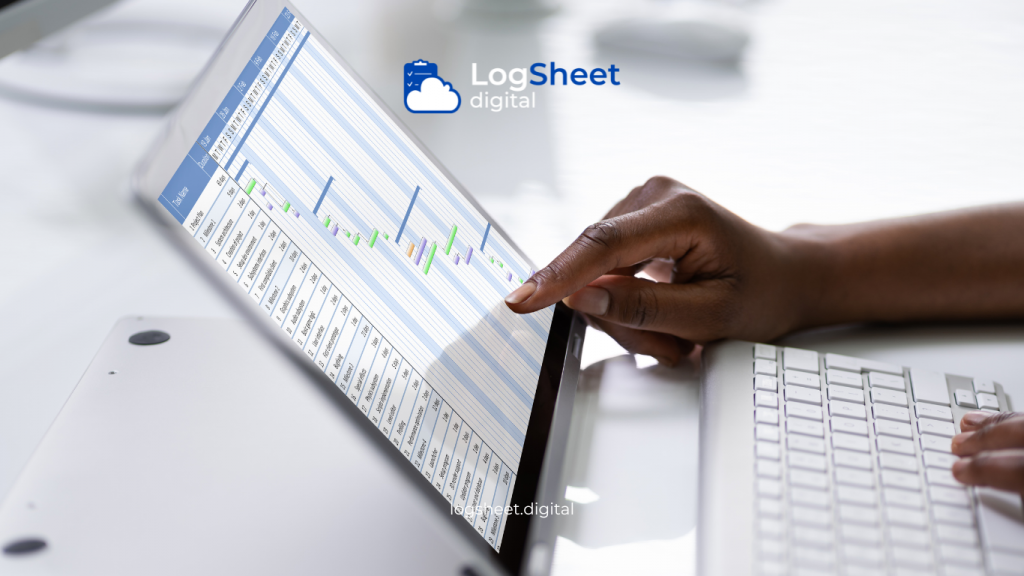In today’s digital era, many industries are undergoing significant changes in how they manage their processes and operations. One area experiencing a major transformation is calibration management. Accurate and timely calibration is crucial to ensure that industrial equipment functions correctly and meets quality standards. With technological advancements, digital logsheets have emerged as a key solution in calibration management. This article will discuss how digital transformation impacts calibration management and how digital logsheets play a crucial role in the industry.
What is a Digital Logsheet?

Read More: Digital Logsheet as a Real-time Monitoring Tool in Industrial Maintenance
Definition and Function
A digital logsheet is the electronic version of traditional logsheets used for recording calibration data of equipment. Instead of using paper to record data, digital logsheets use software and applications to store, manage, and analyze calibration data electronically.
Main functions of digital logsheets include:
- Data Recording: Collecting calibration data from equipment either automatically or manually.
- Data Management: Storing and organizing calibration data in an easily accessible and manageable format.
- Reporting: Providing easy-to-understand calibration reports that can be shared with relevant parties.
- Analysis: Enabling data analysis to identify trends and make improvements.
Key Components of Digital Logsheets
Digital logsheets typically consist of several key components:
- User Interface: A platform that allows users to input and access data.
- Database: A structured repository for storing calibration data.
- Analysis Features: Tools for analyzing data and generating reports.
- System Integration: The ability to connect with other management systems.
Benefits of Digital Transformation in Calibration Management

Read More: Implementation of Digital Logsheets for Tracking and Monitoring Calibration
1. Increased Accuracy and Consistency
One of the main benefits of digital logsheets is increased accuracy and consistency in recording calibration data. By using software to record data, the likelihood of human error in data entry is reduced. Digital data is also easier to verify and validate compared to manually recorded data.
Case Study: In a chemical plant, digital logsheets replaced traditional paper logs for recording equipment calibration results. With automated data entry, errors caused by illegible handwriting were reduced, and more accurate data was obtained.
2. Operational Efficiency
Digital logsheets enhance operational efficiency by reducing the time needed for data recording and reporting. Manual processes, such as entering data into spreadsheets or collecting reports from various sources, are replaced by automated systems that speed up the process.
Case Study: A manufacturing company uses digital logsheets to record machine calibrations. Reporting that previously took several days can now be completed in hours, thanks to an automated system that integrates data from various machines and generates reports instantly.
3. Ease of Data Access and Management
With digital logsheets, calibration data can be accessed from anywhere and at any time, as long as there is an internet connection. This makes it easier for staff to access necessary information without having to search through physical documents or scattered data.
Case Study: In the pharmaceutical industry, technicians can access digital logsheets from their mobile devices to check the calibration status of equipment while in the field, without needing to return to the office to retrieve physical reports.
4. Analysis and Reporting Capabilities
Digital logsheets provide advanced data analysis tools, such as trend tracking, issue identification, and maintenance planning. These analysis features help companies make more informed and proactive decisions regarding equipment maintenance.
Case Study: An energy company uses digital logsheets to monitor turbine calibration performance. With analytical tools, they can identify performance degradation patterns and take preventive actions before issues become severe, reducing downtime and maintenance costs.
Challenges in Implementing Digital Logsheets

Read More: Addressing the Challenges of Digital Logsheet Implementation in Calibration
1. Implementation and Training Costs
One challenge in adopting digital logsheets is the initial implementation cost and staff training. Investment in software, hardware, and training can be a burden for some companies, especially those with limited budgets.
Solution: To address this challenge, companies can start with cloud-based solutions that offer lower initial costs and use online training to reduce training expenses.
2. Integration with Existing Systems
Integrating digital logsheets with existing management systems and devices can be complex. Companies may face difficulties connecting digital logsheets with other systems, such as maintenance management systems or equipment control systems.
Solution: Using software solutions with good integration capabilities and collaborating with technology providers to develop the necessary interfaces can help address integration issues.
3. Data Security and Protection
With data stored digitally, data security becomes a significant concern. Companies must ensure that calibration data is protected from unauthorized access and potential breaches.
Solution: Implementing strict security policies, using data encryption, and setting up proper access controls can help protect calibration data and prevent potential security breaches.
Steps for Successful Digital Logsheet Implementation

Read More: Enhancing Accuracy with Digital Logsheets: Applications in Calibration Oversight
1. Evaluate Needs and Technology Options
The first step in implementing digital logsheets is to evaluate the company’s specific needs and choose the appropriate technology. Consider the types of data to be recorded, integration with other systems, and required analysis features.
Action: Conduct a needs assessment and cost-benefit analysis to select the right solution that fits the company’s budget.
2. Planning and System Development
Once the technology is chosen, create an implementation plan that includes system development, integration with existing systems, and staff training. Ensure that all system aspects are designed to meet the company’s needs.
Action: Work with technology providers to develop a suitable solution and conduct system trials before full deployment.
3. Training and Rollout
Train staff who will use the digital logsheets to ensure they understand how to operate the system and leverage all available features. Additionally, implement the system gradually to minimize operational disruption.
Action: Provide comprehensive training and ongoing support for staff, and monitor system implementation to ensure success.
4. Maintenance and Regular Evaluation
After the system is implemented, it is essential to perform regular maintenance and evaluations to ensure that digital logsheets function properly and meet the company’s needs. Furthermore, address user feedback promptly and make improvements as necessary.
Action: Establish a maintenance schedule and regularly evaluate system performance to ensure it remains efficient and effective.
Case Studies: Digital Logsheet Implementation in Industries

Read More: Overcoming Challenges in Digital Logsheet Implementation in Calibration
Case 1: Manufacturing Industry
A large manufacturing company decided to replace their paper logsheets with digital logsheets for managing equipment calibration. Consequently, by adopting a digital system, the company was able to reduce recording errors, enhance reporting efficiency, and facilitate easier access to data.
Outcome: The company saw a reduction in reporting time from several days to a few hours and a significant decrease in recording errors. They were also able to perform calibration trend analysis for process improvement and cost reduction.
Case 2: Pharmaceutical Industry
In the pharmaceutical industry, where accurate calibration management is crucial for ensuring product quality, a pharmaceutical company transitioned to using digital logsheets for monitoring the calibration of both laboratory and production equipment.
Outcome: The company improved calibration data accuracy and sped up reporting processes. They also better met regulatory requirements and enhanced transparency in their calibration processes.
Conclusion

Read More: Digital Logsheet as a Step Towards Calibration 4.0 in Industry
Digital transformation in calibration management through the use of digital logsheets brings significant changes in how companies manage their calibration data. With benefits such as increased accuracy, operational efficiency, ease of data access, and analytical capabilities, digital logsheets become an essential tool in modern industry.
Despite challenges related to costs, system integration, and data security, the long-term benefits of digital logsheets make them a valuable investment. By selecting the right technology, training staff effectively, and ensuring regular maintenance, companies can leverage digital logsheets for more efficient, accurate, and sustainable calibration management.
This digital transformation is not just about adopting new technology but also about enhancing processes and ensuring that companies can operate more effectively and meet increasingly stringent quality standards.






leave your comments